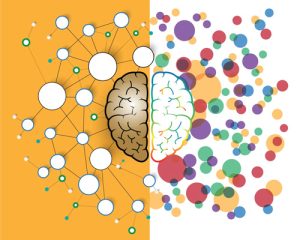 Attention-deficit/hyperactivity disorder (ADHD), as a neurodevelopmental disorder, is characterized by pervasive patterns of inattention, hyperactivity, and impulsivity. Pharmacotherapy remains a cornerstone of ADHD management for many patients whose symptoms truly compromise academic or occupational endeavor, or social functioning. Among the most commonly prescribed classes of agents are the amphetamine salts, with dextroamphetamine and amphetamine therein. This article sets forth a detailed account of the pharmacologic mechanisms, clinical efficacy, safety, interactions, contraindications, and monitoring requirements of these agents. This discussion is tailored toward the particular audience of clinical professionals and practitioners whereby such knowledge is required from a rigorous evidence-based platform and through the level of graduate medical education.
Attention-deficit/hyperactivity disorder (ADHD), as a neurodevelopmental disorder, is characterized by pervasive patterns of inattention, hyperactivity, and impulsivity. Pharmacotherapy remains a cornerstone of ADHD management for many patients whose symptoms truly compromise academic or occupational endeavor, or social functioning. Among the most commonly prescribed classes of agents are the amphetamine salts, with dextroamphetamine and amphetamine therein. This article sets forth a detailed account of the pharmacologic mechanisms, clinical efficacy, safety, interactions, contraindications, and monitoring requirements of these agents. This discussion is tailored toward the particular audience of clinical professionals and practitioners whereby such knowledge is required from a rigorous evidence-based platform and through the level of graduate medical education.
Dextroamphetamine and amphetamine stand out among a class of central nervous system stimulants because of their therapeutic efficacy in treating ADHD symptoms and treatment-refractory narcolepsy. Their mechanisms of action, safety, and abuse potential demand careful clinical attention when starting and continuing therapy. Although clinical efficacy is well documented, there is the continuing need for knowledge regarding adverse effects, drug interactions, and long-term safety concerns, together with suitable strategies for risk management.
Dextroamphetamine and amphetamine, acting primarily on monoamine systems, are efficacious in clinical treatment. The mostly dopaminergic and noradrenergic pathways are affected. Mechanistically, they promote the release of dopamine (DA) and norepinephrine (NE) from presynaptic nerve terminals whilst also inhibiting their reuptake, resulting in increased synaptic concentrations of these neurotransmitters and an increase in neurotransmission in the specific brain regions associated with attention, executive function, and behavioral regulation.
The dextro form of amphetamine has a pronounced stimulant effect on the central nervous system compared to its levo counterpart. The drug profile hints at this preference leading to a therapeutic angle between the dextroamphetamine and the core ADHD symptoms [3]. Both agents affect intracellular signaling pathways indirectly, with more recent studies suggesting a secondary mechanism whereby catecholamine receptor modulation would contribute to its efficacy as well as its side effect profile.
Amphetamine-based treatments have been shown in several randomized controlled trials and meta-analyses to be effective in the treatment of ADHD. Clinical rating scales examine sustained attention, inhibitory control, and regulation of behavior. Decreased inattention and hyperactivity as a result of stimulant therapies with dextroamphetamine and amphetamine salts directly improved the patients’ quality of life and enhanced functional outcomes at the academic and occupational level, as highlighted in comparative studies.
The variable response to therapy in patient subpopulations needs to be considered. ADHD symptoms are heterogeneous; therefore, individualized treatment planning deserves precedence. The persistence of treatment effect beyond the immediate pharmacological duration of action of the extended-release forms has been the subject of ongoing research and clinical debate. Adequate dose titration to strike a balance between therapeutic benefits and minimizing side effects is necessary.
The pharmacokinetics of these drugs involve the rapid absorption and high bioavailability of orally administered agents. Dextroamphetamine has relatively short elimination half-time, around 10 to 12 hours, resulting in the production of extended-release formulations that keep therapeutic plasma levels during the day. These agents are metabolized largely through the liver, with most of the enzymes participating coming from the cytochrome P450 family, mainly CYP2D6. This pathway provides an underlay for many interactions with the drugs that are either substrates, inhibitors, or inducers of those enzymes.
To comprehend interindividual variability in metabolic rates will be essential-particularly considering genetic polymorphisms of CYP450 enzymes can exhibit tremendous differences across populations. Pediatric and geriatric patients require consideration-as pharmacokinetic parameters may greatly affect their efficacy and toxicity profiles.
The potential for drug interactions with amphetamine therapies creates the necessity for caution in this regard. Co-administration with MAOIs is contra-indicated due to the risk of hypertensive crisis from an excessive release of catecholamines. There may also be cumulatively worsening effects with other CNS stimulants or sympathomimetic agents that may enhance generic cardiovascular risks of tachycardia, hypertension, and arrhythmias.
Drug interactions with amphetamine therapy have also been demonstrated with SSRIs and certain antipsychotics, where altered neurotransmitter levels may lead to aggravation of side effects or attenuation of therapeutic responses. Furthermore, dose adjustments may be necessary for any antihypertensive treatment concomitantly administered in order to mitigate adverse hemodynamic effects. A comprehensive review of all medications provided by the health care professional is essential in order to reduce the risk of adverse effects; the use of interaction databases is strongly recommended.
 Contraindications and Populations Specialised Contraindicated for the use of dextroamphetamine and amphetamine are events cardiovascular in nature or severely structural congenital heart defects, as cardiomyopathy, arrhythmias, and coronary artery disease. Patients with hyperthyroidism and anxiety disorders severe, as well as glaucoma, would fall into that highly susceptible category and may, therefore, warrant alternative approaches to treatment. It goes without saying that any person with hypersensitivity to amphetamine compounds should be excluded from treatments of this kind. Special populations would include children, pregnant women, and nursing mothers, who would require a careful risk-benefit analysis.
Contraindications and Populations Specialised Contraindicated for the use of dextroamphetamine and amphetamine are events cardiovascular in nature or severely structural congenital heart defects, as cardiomyopathy, arrhythmias, and coronary artery disease. Patients with hyperthyroidism and anxiety disorders severe, as well as glaucoma, would fall into that highly susceptible category and may, therefore, warrant alternative approaches to treatment. It goes without saying that any person with hypersensitivity to amphetamine compounds should be excluded from treatments of this kind. Special populations would include children, pregnant women, and nursing mothers, who would require a careful risk-benefit analysis.
Dosages in the pediatric population must be slowly and carefully monitored and then watched for any adverse effects growth-related. Since teratogenicity and withdrawal syndrome of the neonate may pose risks for these patient categories, continued dialogue around risk mitigation versus alternative treatment therapies is warranted. While older adults may be at high risk for stimulant effects, they may require more intensive monitoring, specifically those who have underlying cardiovascular diseases.
Effective monitoring is one of the critical components in managing amphetamine-based therapies. Suggested baseline cardiovascular measurements, such as ECG, blood pressure, etc., assume cardiovascular risk factors. Regular follow-up goes along with clinical monitoring of vital signs, mental status, and assessment of parameters for growth (for pediatric patients) to ensure safety in treatment. Monitoring should take into consideration both neuropsychiatric symptoms such as exacerbation of anxiety, mood lability, and even in rare cases psychotic symptomatology, as well as periodic review of liver function tests, which, by nature of the drug’s metabolism and risk for drug-induced hepatotoxicity, may be necessary.
Such drugs are potential agents for abuse, so, for safety precautions, risk factors for each patient need to be assessed regarding the possibility of having a history of substance abuse disorders and concomitant psychiatric illnesses. The use of such a system will ensure comprehensive documentation of clinical efficacy/adverse effects, which could be beneficial to guide dosage adjustment and duration of therapy.
Controlled substances which include dextroamphetamine and amphetamine salts among other amphetamine based medications are all classified as such because they have the propensity for abuse and dependency. Misuse may cause adverse cardiovascular and neuropsychiatric events effects; it worsens in those people predisposed to having substance dependence [12]. Thus, its reinforcing effects have direct reference to dopaminergic pathways, which are greatly overlapping that reward system implicated in addiction.
Risk mitigation strategies include the careful selection of patients, educating prescribers and a medication monitoring program. It also necessitates stringent criteria for prescribing before initiating treatment to ensure that the case history of the patient is clear and treatment contracts implemented. Extended-release formulations and measures limiting the dose have been previously shown to be associated with a decreased level of diversion and misuse compared to immediate-release preparations.
The education of such patients, families, and caregivers is important with respect to the proper use and storage of the medication. PDMPs are one such tool to monitor the dispensing and possible misuse of stimulant medications. They might also include interprofessional collaboration among primary care providers, psychiatrists, and pharmacists to develop a clearly defined shared framework for outcomes evaluation and continued risk mitigation.
For amphetamine-based therapies in treatment of ADHD, the clinician must conduct intense risk-benefit assessment: These computed benefits must be weighed against the possible cardiovascular incidents and side effects psychiatric, and among them, OUD potential. The decision-making process is fortified through clinical guidelines adherence, routine monitoring, and timely therapy adjustment to adverse effects. Patient decision-making, as well as that of their families where applicable, must be included in ensuring appropriate informed consent and adherence.
Clinicians have a duty to keep abreast with evolving literature about long-term outcomes of alternative therapies that could minimize stimulant exposure. Ideally, the management of ADHD should include psychotherapeutic modalities, behavioral techniques, and lifestyle modifications; all of these are to be seen as adjuncts to pharmacotherapy.
New and enduring research continues to show fermenting effects from long-term amphetamine-based treatment into neurodevelopment. The latest neuroimaging studies hint at possible alteration in the structural and functional connectivity of circuits that are important for self-regulatory and attention processes due to chronic stimulant treatment. As yet, the clinical implications of such findings remain undefined and require further study to clarify the condition, especially as related to neuroadaptive changes that might yield such long-term cognitive and behavioural consequences.
The study of pharmacogenomics will allow the tailoring of drugs for patients on the basis of their metabolic profile and receptor polymorphisms. This personalized medicine perspective enables the possibility of individualized dosage, reduction of adverse effects, and avoidance of drug abuse in patients who might be susceptible to an amplified response or heightening the burden of side effects. Further confirmation for these new propositions and refining their clinical application in the treatment of ADHD with the use of dextroamphetamine and amphetamine would require post-marketing studies and continued monitoring.
Dextroamphetamine and amphetamines have been the cornerstone of ADHA pharmacological treatment. The rationale for their usage arises from established mechanisms of action, which increase dopaminergic and noradrenergic neurotransmission. The undeniable positive impact of the drugs considered requires awareness about possible interactions with other drugs and contraindications as well as nurturing the aspect of continuous monitoring. A risk of cardiovascular complications and neuropsychiatric side effects comes with a possibility of abuse; hence these considerations are imperative for treatment individualization and interdisciplinary care coordination.
Future investigations into improving pharmacogenomic techniques and alternative risk-reduction strategies will positively inform and contribute to patient management. The ability to best manage these drugs and thereby improve therapeutic outcomes in ADHD will be dependent upon the ability of doctors to integrate clinical judgment with the emerging evidence.